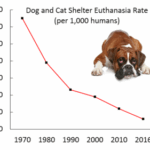Animal cruelty is a phenomenon that can manifest in numerous ways, affecting a vast array of non-livestock creatures across various environments. While most discussions about animal cruelty tend to center around livestock within the agricultural sector, it is crucial to recognize that non-livestock animals, particularly companion animals such as dogs and cats, are also subjected to cruelty under various circumstances. The dichotomy between farm animals and companion animals is striking not only with regard to laws governing their treatment but also in the attitudes and perceptions society holds about these different categories of animals. This exploration aims to elucidate the distinctions in animal cruelty between farm and companion animals and examine the underlying reasons for such disparities.
The legal frameworks regulating animal welfare differ vastly across various jurisdictions, and these laws often reflect societal values and historical context regarding animals. In many regions, laws designed to protect non-livestock animals, particularly pets, are more stringent than those pertaining to farm animals. Companion animals, viewed as cherished members of families, often benefit from a robust network of protective legislation that can include anti-cruelty laws, mandates for proper care, and regulations governing breeding practices. In contrast, agricultural laws often prioritize economic efficiency over animal welfare, leading to a permissive environment for acts that would be deemed unacceptable toward companion animals.
This discrepancy can be traced back to the roles that animals play in human society. Farm animals are frequently regarded as commodities—resources to be utilized for food, labor, and other economic benefits. The objective of maximizing productivity often supersedes the ethical considerations surrounding their welfare. Consequently, practices such as factory farming, where animals are raised in confined, inhumane conditions, become acceptable to a society that values efficiency over empathy. Such treatment defines a form of cruelty that, while legally permissible, raises significant ethical concerns. The absence of stringent enforcement of welfare laws often allows for egregious abuses to occur in agricultural settings without repercussion.
Companion animals, on the other hand, generally command a different standard of care. Legislative bodies have enacted animal cruelty laws that specifically address the treatment of pets, thereby recognizing their intrinsic value beyond economic output. These laws embody a societal consensus that sees companion animals as deserving of affection, compassion, and protection from harm. For instance, statutes against neglect and abandonment are designed to safeguard these animals, ensuring they receive necessary medical attention, adequate living conditions, and proper nourishment. Furthermore, pet ownership often comes with a moral obligation that transcends mere legal compliance, fostering a cultural ethos that encourages active advocacy against cruelty.
However, the complexity of animal cruelty extends beyond mere legal classifications. The nature of human-animal relationships also plays a crucial role in determining societal attitudes toward different types of animals. For instance, companion animals often benefit from the anthropomorphizing tendencies humans possess. People tend to project human characteristics onto pets, leading to a stronger emotional connection and sense of responsibility. This emotional bond often translates into greater societal outrage when companion animals are subjected to cruelty. In contrast, farm animals, often perceived as less relatable, fail to evoke the same level of empathy among the general public, which can lead to a disturbing indifference toward their suffering.
The bifurcation in the perception of cruelty invites a deeper consideration of the psychological factors that underpin our fascination with animals. Many people find comfort and companionship in pets, forming connections that stem from loyalty and affection. In this lens, companion animals are viewed as integral to human experiences, sharing in our joys and sorrows. Conversely, farm animals are frequently obscured from public consciousness, raised in environments where their suffering is invisible, and their lives remain removed from the emotional nuances that characterize relationships with pets. This disconnect can lead to an unsettling conclusion: that societal empathy has been historically selective, based on superficial traits such as appearance or function.
The contemplation of animal cruelty should prompt a reevaluation of how society defines value among non-livestock animals. The legal inadequacies regarding farm animal welfare often allow for practices that would be regarded as heinous if inflicted upon companion animals. The underlying reasons for this discrepancy are complex, informing a societal attitude that favors utility over compassion. Additionally, the normalization of cruel practices in agricultural systems—such as gestation crates for pigs or battery cages for chickens—desensitizes the public to the suffering endured by these animals, fortifying a culture of neglect.
The imperative to address animal cruelty encompasses the need for legislative reform, increased public awareness, and more effective animal protection frameworks that can transcend the obsolete paradigms separating companion and farm animals. Planting the seeds of empathy and ethical considerations in the arena of animal welfare requires a concerted effort to cultivate awareness that all animals possess intrinsic worth, regardless of their societal roles. An evolving recognition of this shared value can illuminate the path to mitigating cruelty across the spectrum—taking us from an adversarial relationship to one founded on mutual respect and understanding.
In conclusion, the exploration of cruel practices against non-livestock animals reveals profound insights into societal values and priorities. Bridging the gap between the treatment of farm and companion animals necessitates a recalibration of legal frameworks, social attitudes, and personal ethics—a comprehensive effort that aims to cultivate a world where compassion prevails over exploitation. It is a collective responsibility to advocate for the voiceless and ensure that all forms of animal cruelty are recognized and rigorously addressed.




